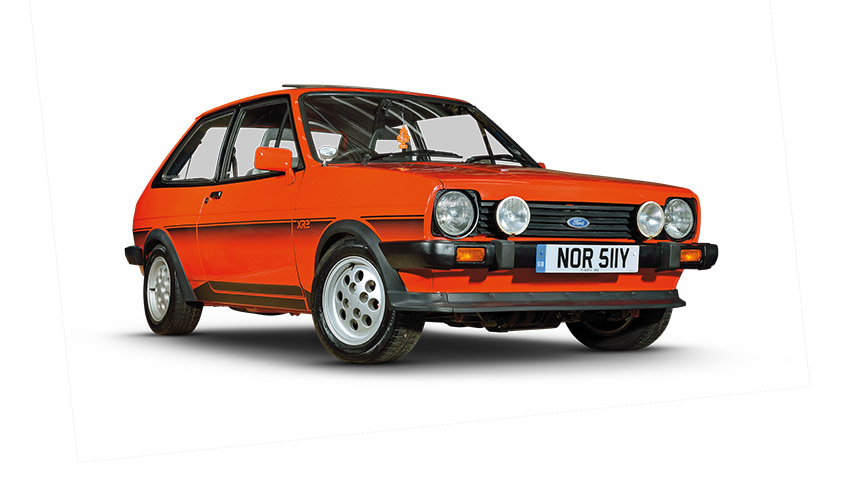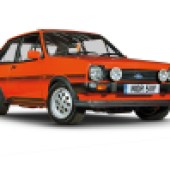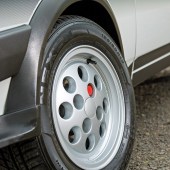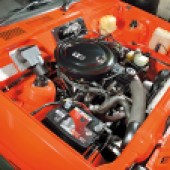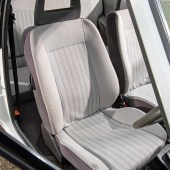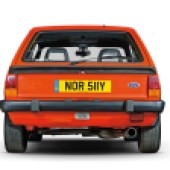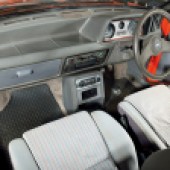The Ford Fiesta XR2 Mk1 was a featherweight buzz-bomb from which all fast Fiestas evolved. Now an ever-appreciating classic, the Mk1 XR2 is a pure performance icon that can still be bought, used and enjoyed – if you know where to look…
Guide from Fast Ford magazine. Words: Dan Williamson. Photos: Fast Ford archives.
Ford Fiesta XR2 Mk1 history
June 1976 – Ford Fiesta goes into production in Valencia, Spain, as Ford’s first front-wheel-drive supermini. It includes transversely-mounted Kent engines in 957cc or 1117cc, new gearbox, MacPherson strut front suspension, rear beam, and front disc brakes.
February 1977 – Fiesta goes on sale in UK, with model options of base, L, Ghia and S, with 1298cc engine now available. Fiesta S includes 53bhp 1.1 or 65bhp 1.3, uprated springs, rear anti-roll bar and brake servo.
July 1980 – Ford’s Supersport launched, based on the regular 1300S with 1298cc Valencia, Series-X spoilers and wheelarch extensions, four-spoke 6x13in alloy wheels, circular driving lamps, bold decals, and Carla cloth upholstery.
Spring 1981 – Fiesta Supersport no longer available.
December 1981 – The XR2 launched in UK, developed by Ford SVE and featuring Escort Mexico-based 84bhp 1600cc Crossflow engine, four-speed gearbox, ventilated front disc brakes, 6x13in alloy wheels, circular headlamps, XR2 decals, body-coloured door mirrors, black paint around the windows, Storm cloth cabin, black headlining and two-spoke steering wheel.
January 1983 – Mk1 XR2 discontinued after 20,003 UK sales.
June 1984 – Fiesta XR2 Mk2 introduced, based on revised Fiesta three-door body and 1.6-litre CVH engine.
Why you want one a Ford Fiesta XR2 Mk1
- Every fiery Ford Fiesta can trace its roots back to the Mk1 XR2, so its heritage as a piece of iconic Ford history is set in stone.
- XR values have taken their time to reach RS levels, but they’re now not far behind – and the rarer models (such as Mk1 XR2) are becoming important cars for fast Ford collectors.
- Just look at it. The sense of fun brought on by driving a 40-year-old roller-skate is equalled only by the cheeky little smile of a Mk1 XR2 poking its nose out of your garage.
Why you don’t…
- Never the quickest hot hatchback even when new, the Ford Fiesta XR2 Mk1 is positively pedestrian by today’s standards, and will be left standing by an MPV packed with a family of seven.
- Although the Mk1 Fiesta is perfectly practical, it’s impossible to overuse for fear of it getting stolen or becoming damaged. Rust, in particular, is always keen to take hold.
- Most XR2s have led hard lives, so loads have been abused and crashed. Plenty have also been reshelled into existing 1.1 Populars – and are now worth considerably less cash.
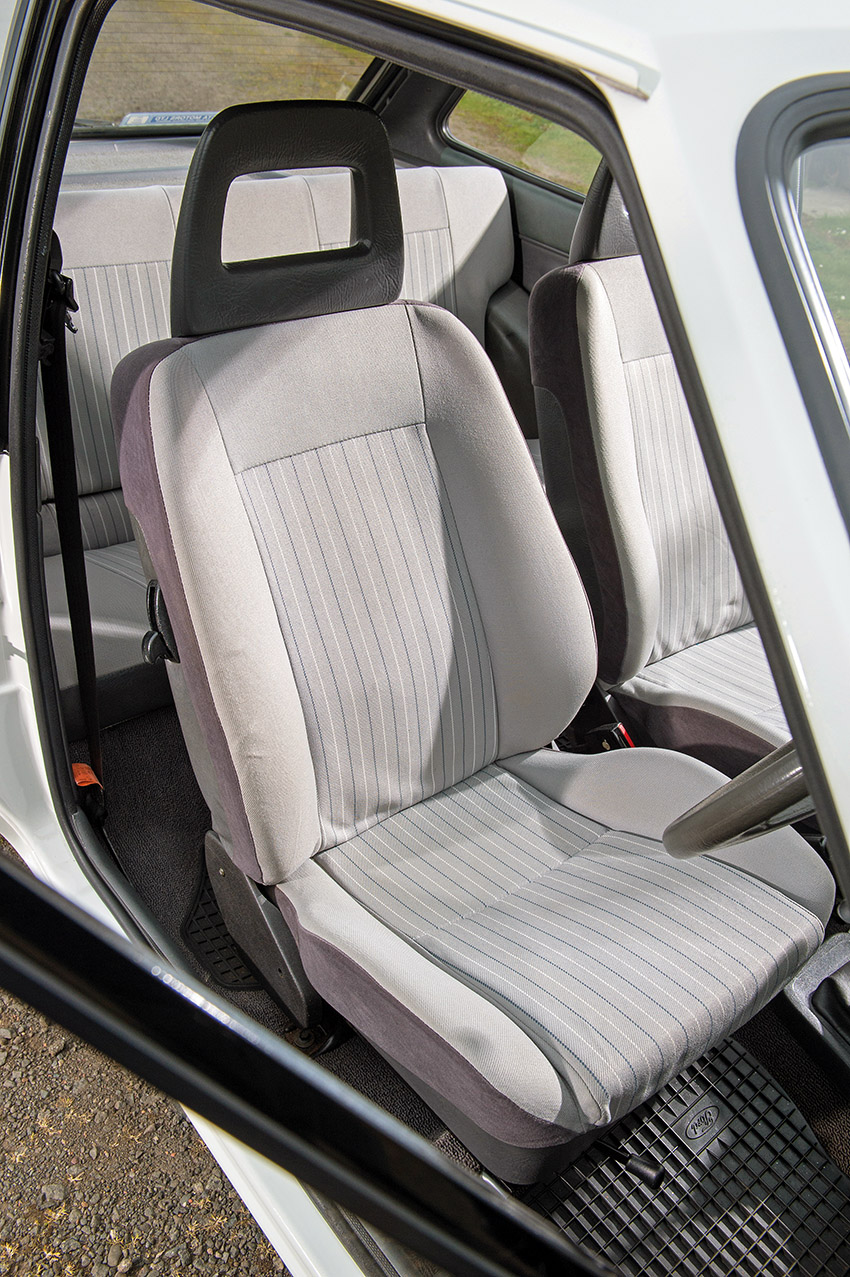
Ford Fiesta XR2 Mk1 key points
- Body – A rotten Mk1 can be a bank-emptying nightmare. Make sure the shell hasn’t been consumed by tinworms.
- Interior – Find a car with decent trim and you’ll save yourself loads of grief. Ensure all the proper XR2 bits are in place – yes, even that awful two-spoke steering wheel.
- Engine – It’s probably rattly, but that’s normal for a Kent. Be more concerned if it’s smoking from the exhaust or breathing from the oil filler cap.
- Suspension – XR2s were famed for roller-skate handling. If it’s vague there could be simple bush troubles, but you may also be looking at broken or rotten suspension components or even a rusty bodyshell.
- Identity – All too many XR2s have been reshelled or faked. There are certain pointers to an authentic XR2, so do your homework before viewing.
What to look for on the Ford Fiesta XR2 Mk1
Identity
An XR2’s value is tied to its identity. Although there’s nothing wrong with a replica or recreation, it’s not worth as much as the real deal. Ringers and reshells should be treated with extreme caution.
Start by checking that the VIN number on the logbook matches the chassis number stamped into the driver’s-side inner sill/floor, visible through a slot in the carpet. If it’s not there, it could be dodgy or simply rusted away. The same number should be seen on the VIN plate in the engine bay, attached to the offside bulkhead; the VIN number on any Mk1 XR2 should start with VS6 (the code for Valencia, where all XR2s were assembled), followed by BXXWPFB plus two more letters and five digits that relate to the unique chassis number, as also found on the engine.
The engine itself should have a casting reading 771M-6015-CA, along with T7 stamped under number four exhaust port, next to the gearbox.
Check the rest of the VIN plate. The engine code should read L3, the transmission code should be T, and the axle code P (3.58:1 ).
XR2 bodyshells were unique, with certain key spots to check it’s authentic. Ensure it’s a facelift bodyshell with two-bolt bumper mounts on the front and rear panels (as opposed to single holes on pre-August 1981 Fiestas); if the bumpers have had a fixing removed, suspect it’s not an XR2 shell.
The XR2 front panel was different for the circular headlamps, and the rear valance was also unique, being factory-pressed prior to assembly – unlike the Supersport, which was modified in situ; both have a spare wheel bulge visible below the back bumper.
Crucially, there should be strengthening plates affixed to the chassis rails under the front floorpan with four 13mm-headed bolts. The XR2 also had a reinforcing plate in the nearside front inner wing for a top gearbox mount, which was fitted to all 1300cc Mk1s; if it’s missing, you’re probably looking at a Fiesta 950/1100 bodyshell, and it’s time to walk away.
If in doubt, check with the XR Owners’ Club; membership is essential for any Ford Fiesta XR2 Mk1 owner or buyer.
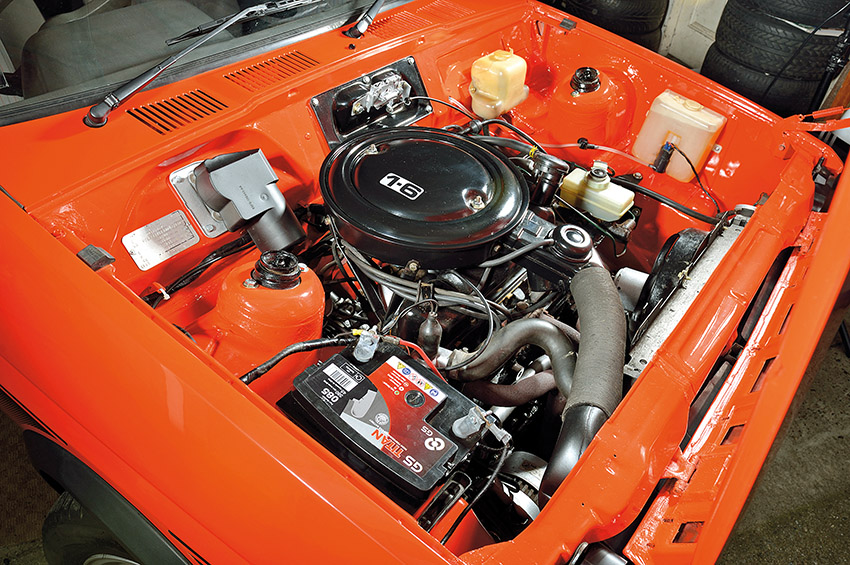
Engine
Ford Fiesta XR2 Mk1 power came courtesy of an old 1.6-litre Kent (Crossflow) engine – a repackaged version of the unit found in Ford’s Escort Mexico of 1970. By now, some of its 84bhp may be missing, and you’ll certainly notice the loss, especially if it won’t rev.
A tired Crossflow will burn oil – usually breathing from the oil filler when warm or billowing out blue smoke through the exhaust. If so, the pistons, rings and cylinder bores will probably be worn; symptoms show up as early as 60,000 miles, but a Kent will generally keep going forever, albeit getting slower.
Don’t be concerned about a puff of smoke at start-up or the overrun, which suggests the valve stem oil seals need to be replaced. Oil leaks are also very common – especially from sump and rocker cover gaskets, particularly if they’ve been overtightened.
Crossflows are relatively simple engines to work on, but parts aren’t as cheap as they once were. Regular oil and filter changes are very beneficial, and it’s worth refreshing the coolant when you get chance. Many XR2s have by now received an unleaded cylinder head conversion, but we’d advise keeping clear of new E10 petrol.
Listen for nasty noises from the engine. It’s inherently a rattly unit due to the timing chain and valve gear, but if it sounds like a typewriter, the tappets probably need adjusting. Heavy clacking could be a slack chain or broken camshaft followers and scored cam, which will mean the engine needs a rebuild.
Misfires and starting difficulties are pretty common but unlikely to be serious – usually pointing to a knackered distributor, ignition amplifier, coil, or old spark plugs and/or leads. Poor performance and rough running may also come from a tired or badly-adjusted carburettor, especially if the auto-choke mechanism is sticking. It’s well worth buying a new Weber to save yourself loads of grief.
Don’t be surprised to see a modified motor under a Mk1 XR2’s bonnet. The Crossflow is capable of producing much more power with a high-lift cam, flowed head, tubular exhaust manifold and bigger carburettors; just remember standard cars are worth more cash, so budget accordingly.
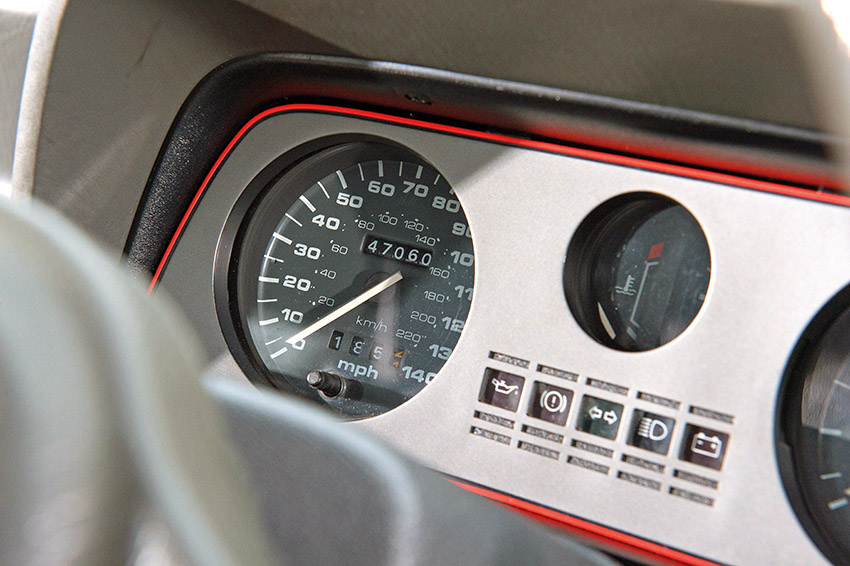
Transmission
All Mk1 XR2s were fitted with a BC four-speed manual transmission – if you find a five-speed under the bonnet, it’s been retrofitted. While handy for motorway driving, the conversion involved fitting the BC5 from an XR3/XR2 Mk2 and involved cutting out the nearside front chassis leg to accommodate the bigger gearbox. So if you’re looking at a supposedly original car, check the inner wing and chassis rail to make sure it’s never been modified.
The standard four-speed was able to cope with an XR2’s torque, but mileage and lack of maintenance can lead to problems.
Take a test drive. The gearshift isn’t particularly pleasing, but difficulty changing cogs suggests a problem: it could be worn selector bushes in the linkage or poor adjustment. Crunching when selecting reverse is normal, but between forward gears points to synchromesh failure.
If you hear vibrations or whirring, dip the clutch pedal; if the noise stops, it’s from a worn thrust bearing; if it continues, it’s probably from worn differential bearings in the differential; if it’s accompanied by a non-working speedometer, the bearings have collapsed and it’s time for a rebuild.
Check for clutch slip by driving in fourth gear at 30mph, then hammering the accelerator. If the revs go up but the road speed doesn’t increase, the clutch is most likely slipping. But check the ratchet on the back of the pedal isn’t in need of adjustment and that the cable isn’t stretched.

Suspension & Brakes
It’s all very straightforward beneath a Mk1 XR2, with MacPherson front struts, beam rear axle with coil springs, telescopic dampers and larger-diameter (14mm) anti-roll bar than regular Mk1 Fiesta 1300s.
Check for leaking dampers, and examine the strut top mounts for excessive play. Vibrations and knocking from the front will be caused by worn lower ball joints or track rod ends, while vague steering suggests tired track control arm bushes. The driveshaft and steering gaiters tend to tear, so look for leaks. It’s all cheap to repair.
A worn steering rack (all Mk1s were non-assisted) will exhibit sloppiness from the front. Make sure it’s the proper XR2 rack, which has lock stops to save the 185-section tyres from catching on the wheelarches; examine the inner wings for shiny metal where they’ve rubbed.
Wallowing and poor handling tends to result from knackered dampers or snapped coil springs; the latter will often be accompanied by the XR2 leaning to one side, but could also point to rotten rear axle spring cups, which force the spring into an odd angle; a repair will mean removing the axle from the car. Noises from the back may also be due to broken anti-roll bar drop links or worn trailing arm bushes.
Ford Fiesta XR2 Mk1 brakes included small front discs and standard-sized Mk1 rear drums. Drivers of modern hot hatchbacks may be alarmed by a vague brake pedal; it’s naturally spongy but much worse when there’s wear in the linkage between pedal and servo, which runs across the bulkhead.
Brake parts are cheap and easy to source. The fronts may be juddering due to contamination on the discs/pads or a sticking calliper – especially if the car pulls to one side.
Ensure the rear drums aren’t seized, which is common when the car’s not used very often. Check the rear wheel cylinders aren’t leaking and that the handbrake works – the cable could be stretched or badly-adjusted. For safety’s sake, make sure the brake lines aren’t rusty and the rubber hoses aren’t perished, split or ballooning.
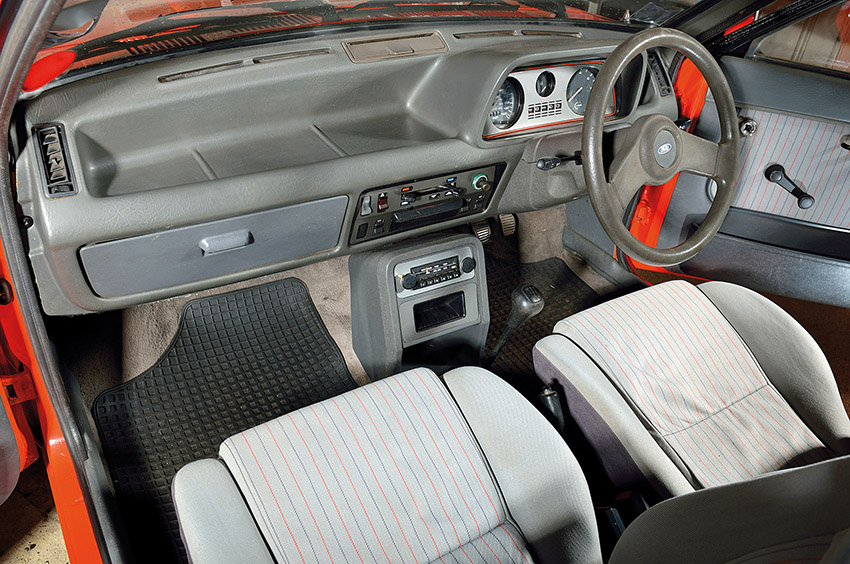
Interior
Mk1 Fiesta cabins were built on the cheap. Don’t be surprised to see scuffed or broken plastics, loose or missing trim.
Dashboard tops tend to crack, and they’re difficult to repair; decent second-hand replacements are pricey. Make sure the instruments are pukka XR2 bits: a 140mph speedometer and rev counter in grey binnacle with red surround. The centre console should have a similar grey finish.
The switches are durable but the symbols wear off; they’re standard Mk1 bits, so not difficult to source. Dashboard lights often seem dull due to blown bulbs and perished plastic covers.
XR2’s Storm and Crushed Velour upholstery is relatively hard-wearing but stains easily. The driver’s seat bolster is prone to tearing and its foam collapsing; check it’s not been replaced with a passenger seat. Both fronts should have A-frame headrests, although padded centres were optional and worth the extra cost.
Check the door cards to make sure the vinyl isn’t separating and that the door bins aren’t damaged. The rear parcel shelf may be sagging or cut for speakers; replacements can be expensive.
Beware of cheap-looking carpet – the XR2’s was a plush Ghia grey matt, and is not easy to find in good condition. Make sure the rest of the spec is XR2 too: you’ll need to see an illuminated glovebox and fag lighter.
Don’t forget to look up: XR2s had a black headlining with twin sunvisors, roof-mounted digital clock and three grab handles. If bits are missing, question the car’s authenticity or prepare to start spending; it’s usually cheaper to buy a car with mint interior rather than replacing all the important trim.
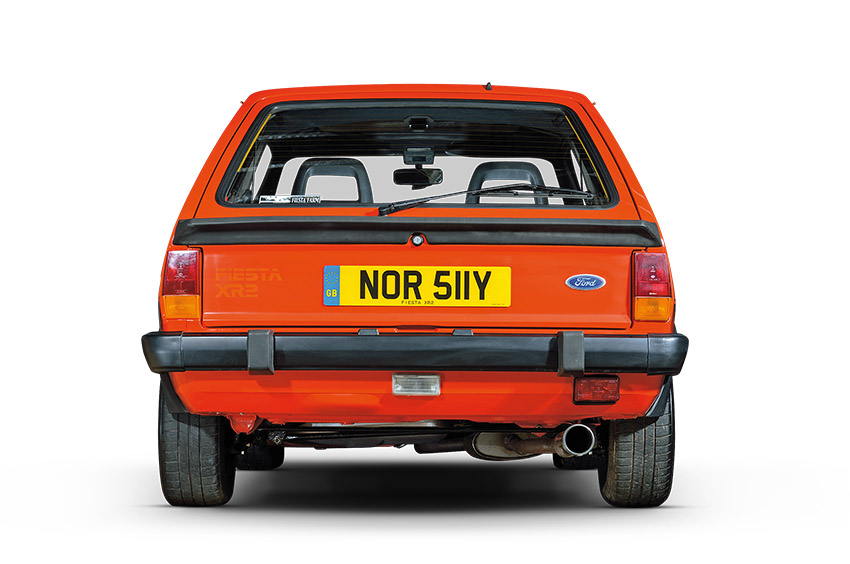
Exterior
Mk1 Fiesta bodywork often has more perforations than a teabag. Repairing a rusty XR2 can be an extremely involved task (which explains why so many reshells are kicking around).
Search everywhere for tinworm: start with the front valance and front panel, looking from beneath the bonnet and ensuring it was built for circular headlamps; new panels are tricky to find. Check the leading edge of the bonnet and its underside, then the inner wings, suspension towers, battery tray and bulkhead.
Examine the front wings, particularly behind the wheelarch extensions, then inspect the sills, jacking points and entire floorpan, notably the chassis rails and suspension mounting points. Lift the carpets to check the floors and inner sills.
The windscreen pillars, scuttle and door window seals could be crusty, as could the A-pillars – severe rot will result in the shell flexing when you open the doors. The hinge pins also wear, allowing the doors to drop when opened. Doors rust along their rear edges. If there’s a sunroof, see if the aperture is flaky.
At the back, look for rust around the fuel filler, and check the tailgate for corrosion on the edges and around the window seal. Inspect the boot floor, which disintegrates due to leaking tailgate/seals, and look around the rear washer bottle, where a felt pad soaks up water.
Crucially, pay particular attention to the rear valance, which is a factory-pressed panel unique to the XR2 (not the same as a Supersport’s), featuring a bulge to make room for the 13in alloy spare wheel. Rot is common, and replacements are rare.
The polyurethane bodykit can still be found second-hand, but prices are on the rise. Examine the fixings on the wheelarch extensions, which cause the plastic to blister outwards when rotten. Make sure the rear spoiler hasn’t been bent by people prodding it.
Don’t worry if the decals are scabby – top-notch repros are available – but panic if the front driving lamps are missing or corroded. Carello 591s (with correct ball-and-socket fittings) are extremely pricey, and even the brackets cost loads. The unique XR2 7in circular headlamps are also expensive, so check your car hasn’t been adapted to take VW Golf units.
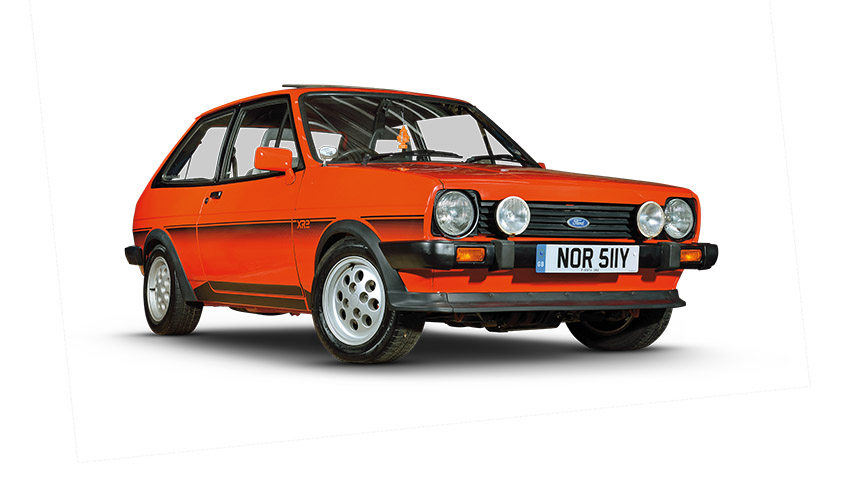
Ford Fiesta XR2 Mk1 prices
Project: £3000-£6000 – It’s unlikely you’ll find a Mk1 XR2 with any hope of being restored for less than £3000. If you do, it’s most likely to have loads of missing parts or a dubious history. Don’t be surprised to see a shell that didn’t originally begin life as an XR.
Good: £6000-£12,000 – Few average-condition Mk1 XR2s around; most tend to be in need of restoration or already restored. But you might find a roadworthy example, ideally needing just mechanical problems repairing rather than body and trim.
Concours: £12,000-£20,000-plus – Show-worthy XR2s cost five-figures, with the most money for low-mileage, low-ownership, factory-original cars. First-class restorations are valuable, but sellers of ultra-low-mileage machines will be able to name their price.

